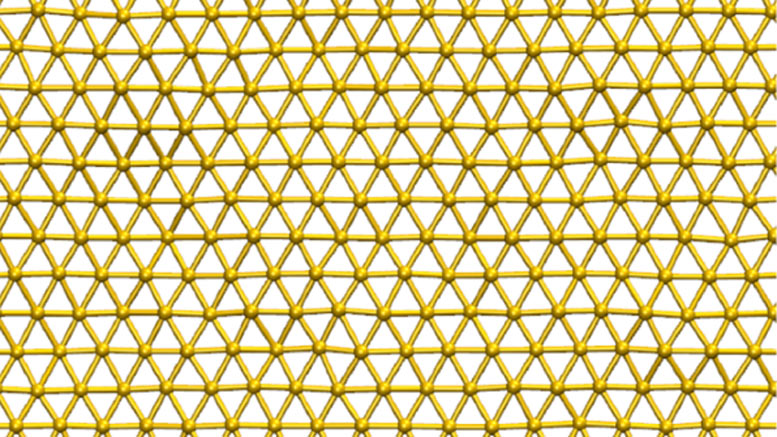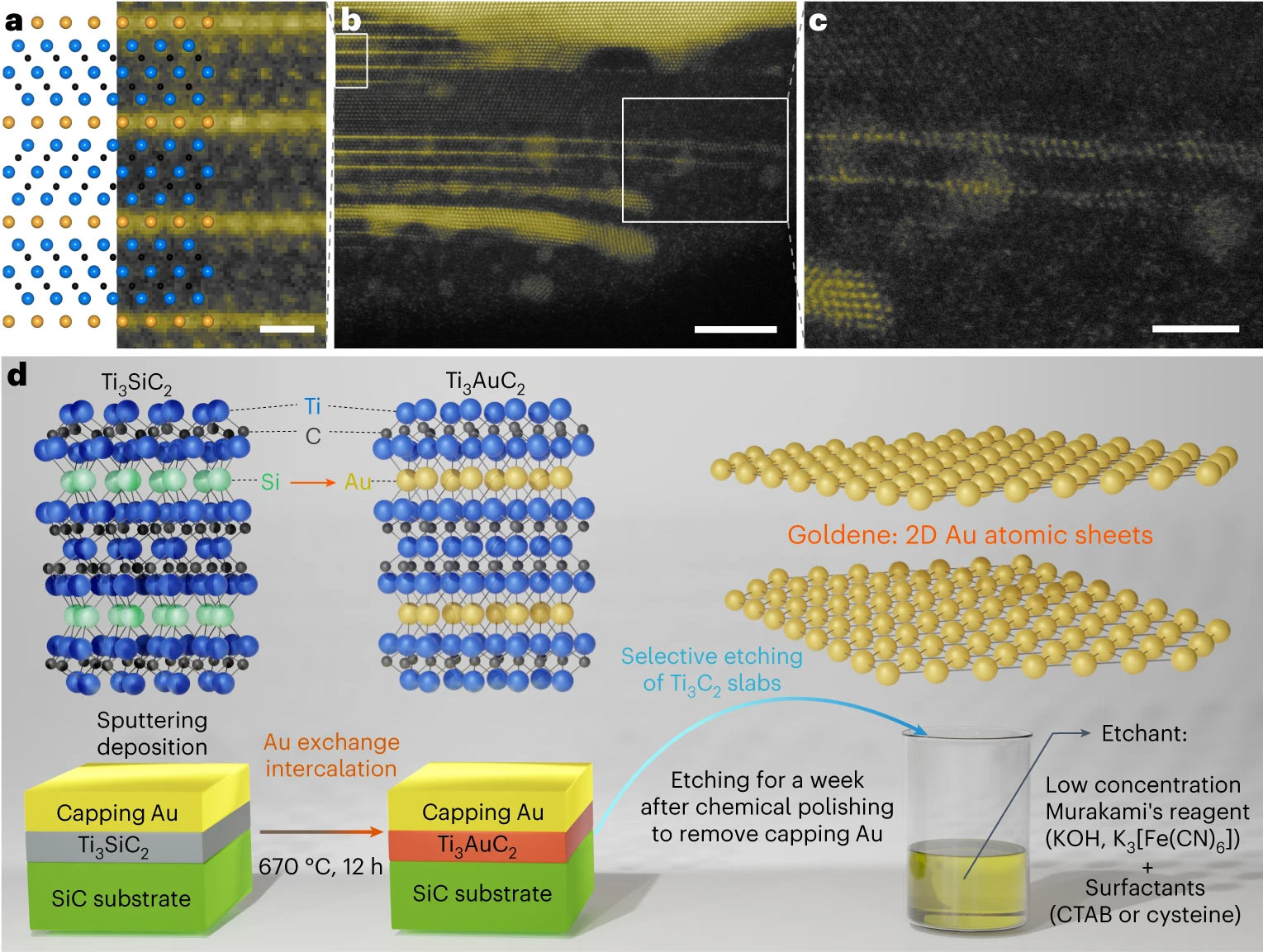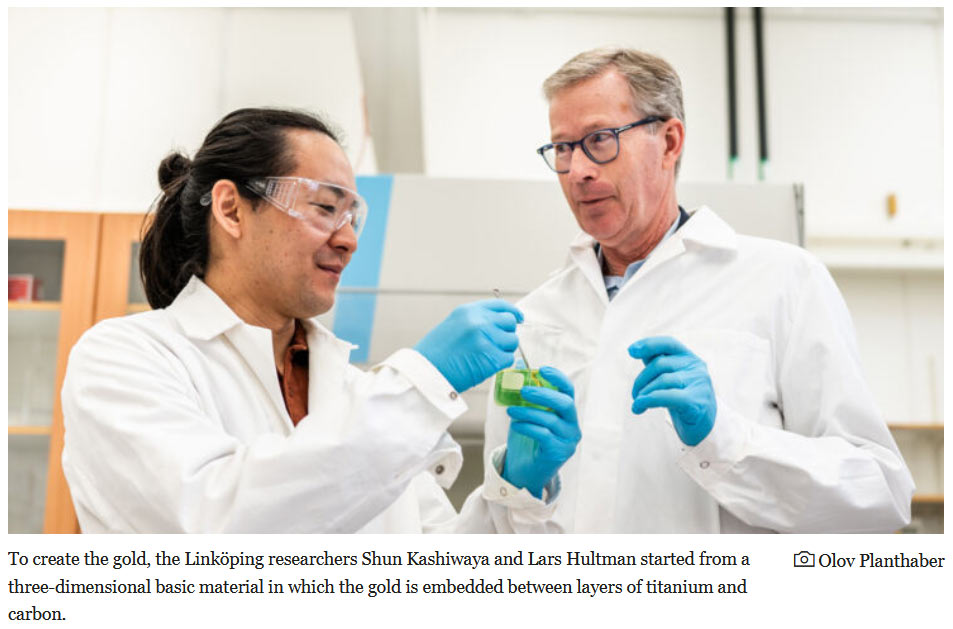Researchers from Linköping University claim to be the first to have successfully created sheets of gold composed of justa single atomic layer. Move overGraphene- the naturally more glamorous Goldene has arrived, and just like that much fanfare 2D wonder material it is said to deliver some highly attractive, if not unique, properties. Interestingly, Gold also becomes a semiconductor in its 2D form.
According to the Linköping blog, previous attempts in the quest to create Goldene have failed due to “the metal’s tendency to clump together.” Another hurdle that Goldene faces is that it tends to curl up. Thankfully the scientists involved, Lars Hultman and Shun Kashawaya, seem to have worked past both issues.

Many scientific backstories reveal that there isa measure of good luckbehind key discoveries or breakthroughs. In the case of Goldene, the researchers were studying a completely different application of gold when they created thin layers of titanium gold carbide. However, the next step is the most important, and it is by design.
A century-old Japanese blacksmithing technique that used ‘Murakami’s reagent’ to etch away carbon residues on knives was pondered over as a way to extract gold sheets from titanium gold carbide. Apparently, Kashawaya tried a multitude of different concentrations of the Murakami reagent and various lengths of time to perfect the gold sheet extraction technique. Some of the process experiments took “several months.”

Of course, the diligence and patience of the scientists won through – hence this article - but another important step remained. Making 2D Goldene sheets stable requires a surfactant, and this is successfully used to prevent the material from curling and becoming 3D…
It is explained that many of the new applications of Goldene are evident due to the 2D material having two free bonds when it lies in two dimensions.

Goldene applications
Though the scientists assert that Goldene has “many applications,” details aren’t very specific in some cases. One obvious benefit is in places gold is already used as a catalyst, quantities of this precious metal in use “can be greatly reduced.” As for new applications, it is hinted in aNature publishedpaper that Goldene will have “unusual plasmonic and electronic properties and to be potentially beneficial to photonic and medical applications such as solar energy harvesting and plasmonic photothermal therapies for cancer treatment.” Meanwhile, the semiconducting properties of single-layer Au aren’t expanded upon at any length.
Get Tom’s Hardware’s best news and in-depth reviews, straight to your inbox.

Lastly, we think that any attractive semiconductor properties shown by Goldene would have to be rather momentous to use more of this scarce and precious metal in chipmaking. For now, scientists haven’t given up researching theuses of Grapheneandother 2D materialsin advancing semiconductors.
Mark Tyson is a news editor at Tom’s Hardware. He enjoys covering the full breadth of PC tech; from business and semiconductor design to products approaching the edge of reason.